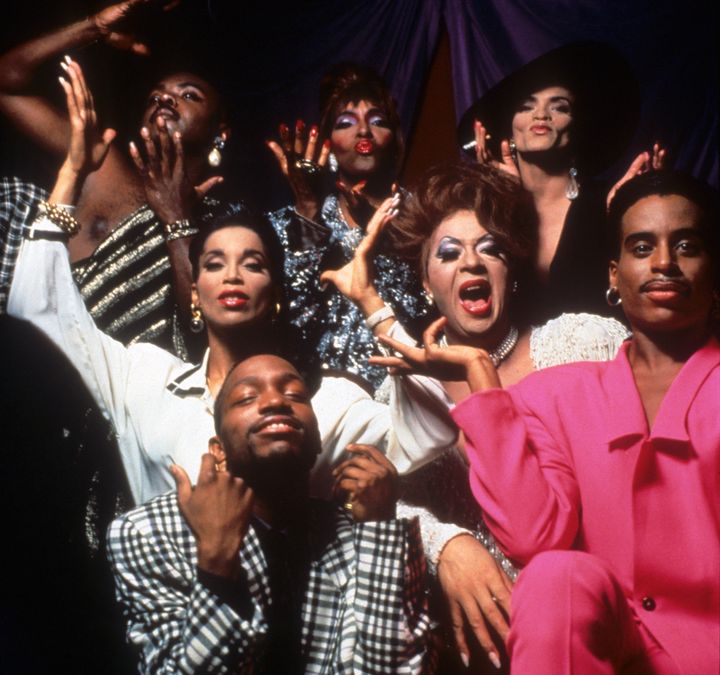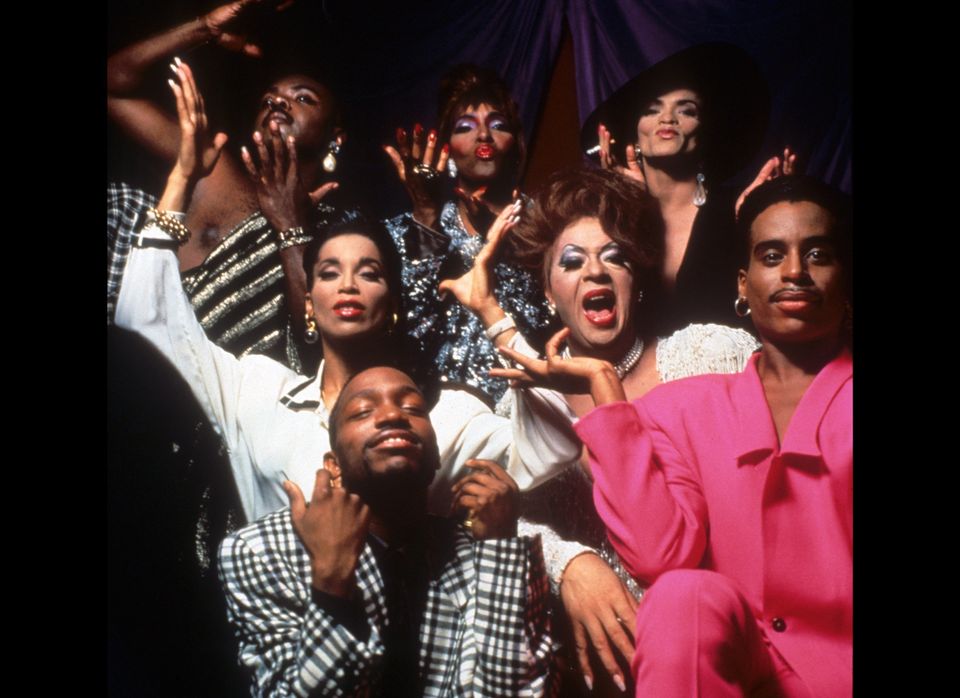
"A house? Let's see if we can put it down sharply. They're family," Dorian Corey says, 25 minutes into the iconic 1990 film "Paris Is Burning." "This is the new meaning of family. The hippies had families and no one thought nothing about it. There wasn't a question of a man and a woman and children, which we grew up knowing as a family. It's a question of a group of human beings in a mutual bond," she goes on to say.
That was 22 years ago, and while ball culture has evolved in a number of ways, according to Chela D, a mother in the Los Angeles-based house of Van Cartier, the significance of family is essentially the same as it was back then.
It may even hold more weight in 2012, a notion that has been the subject of study by Dr. Katrina Kubicek, program manager for the Community, Health Outcomes and Intervention Research Program at Children's Hospital in Los Angeles. Kubicek's work in the field of medical anthropology offered her the insight required to gain trust on the notoriously underground ballroom scene and get the information she needed for a study published last month in the journal AIDS and Behavior.
"The young men that are a part of the ball scene are oftentimes ostracized by their families and communities based on their sexuality and gender identity, and the ball scene is really a place that a lot of them describe as a safe haven," Kubicek said.
Her latest study, a project five years in the making, focuses on gay African-American and Latino men, and the relationship between participating in the house and ball communities and seeking support for homophobia, discrimination and positive HIV diagnoses, Kubicek told The Huffington Post.
When it comes to the role balls and houses play in HIV prevention, however -- a topic that's garnered little discussion, save for one study published in a 2008 issue of the American Journal of Public Health, which found that of the nearly 20 percent of men who tested positive for HIV, nearly 75 percent were unaware of their status -- Kubicek is quick to note that her work is focused less on the deficit approach in these high-risk communities. "It's really trying to identify [instead] what's working and what are the aspects of resiliency that we can potentially build on and support," she said.
It's a positive outlook in an otherwise grim reality. "In one of the last scenes in 'Paris is Burning,' they’re planning an HIV prevention program and ball," Kubicek said. "That’s 1990, a good chunk of time ago, and quite honestly, nothing has changed in that respect."
In fact, most if not all of the "Paris Is Burning" cast has died in the last 22 years, a reality touched upon by New York Times writer Jesse Green as far back as 1993, and one that makes programs like the onsite testing and counseling introduced by Kubicek and her team all the more important.
Yet, at its core, the house and ball community's basic structure -- which includes a house mother and father and the kids or siblings alongside them -- is primed to build a good sense of social support. Social support that Kubicek says is a good counter for poor mental health and the HIV risk behaviors that can follow.
Thirty-something-year-old house mother Chela agrees. She has been in the ball community for the last six years, but her broader personal experiences inform her reasoning for why people participate.
"I come from a field of advocacy, social work and have tried to be a person who advocates and tries to move our community forward, but the reasons why people might get involved with ballroom might be different," she said. "Some people get involved because of the talent aspect -- a venue to express their talents. Others might [do it] to find something that might not have been as strong in their life previously, like mentorship, leadership roles or role models."
As a house mother, Chela said her wish is to see her kids perform well on the ballroom floor, but also to see them thrive in their personal lives. "It's not just about ballroom. We have some young kids who are going through senior year of high school, so our goal is to support them in that, make sure that they graduate and that they're steadfast in their studies," she said.
Regardless of why people flock to the ball circuit, Chela has found that a high level of talent prevails across the board, with the balls' competitive "categories" offering an opportunity to show off those talents just as members did back in the community's "Paris Is Burning" day.
From the "Butch Queen Vogue Femme/Female" figures to the "BQ Realness" types, to the category that judges how many of the year's labels can be incorporated into one ensemble, early ball categories seemed to place an emphasis on creating an image, Chela said.
A close look nowadays, however, reveals how those categories have evolved. "I'm not one of those '20 years into it' kind of people, but back in the day it was more about portraying an image on that floor," she said. "Now it isn't just about image, because people are actually able to do a lot of those things [in real life]. There are a lot of people who are actually working in the industry, that are involved in the entertainment world, the fashion world as professionals. The ballroom produces some of the greatest talent that our industry has seen -- from makeup artists to fashion designers to choreographers to models," she said. These days even women can participate, too.
Self-expression on the floor isn't just a catalyst for the shamelessness in which Kubicek said her study participants took comfort, it's also a catalyst for cultural touch points like the ones credited to "Paris Is Burning" -- terms like "reading," "shade" and Willy Ninja's famous "voguing."
Here, Chela shares some photos from the Los Angeles ballroom scene. Plus, a look New York's famous "House Of Latex Ball," and a look back at where the ballroom tradition began.
